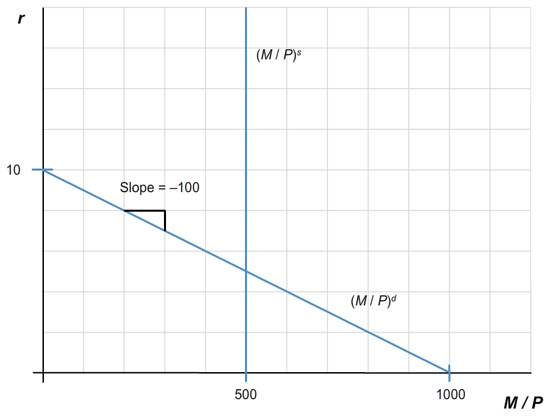Chapter 1. Chapter 11 – Question 5
Step 1
Question
Suppose that the money demand function is
(M/P)d= 1,000 – 100r,
where r is the interest rate in percent. The money supply M is 1,000 and the price level P is fixed at 2.
a. Below is the graph of supply and demand for real money balances.
What is the equilibrium interest rate?

The equilibrium interest rate, r, equals DYU2tVvtzEQ=%.

Step 2
Question
Suppose that the money demand function is
(M/P)d= 1,000 – 100r,
where r is the interest rate in percent. The money supply M is 1,000 and the price level P is fixed at 2.
b. What happens to the equilibrium interest rate if the supply of money is raised from 1,000 to 1,200?
The equilibrium interest rate, r, equals h4XZagboIgc=%.
Question
c. If the central bank wants the interest rate to be 7 percent, what money supply should it set?
The central bank should set the money supply equal to Y4X9gzy3nmw=
